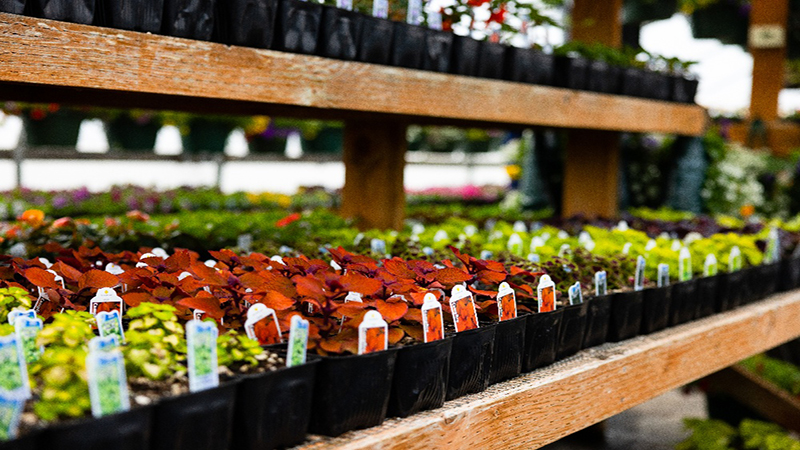Experts Share Top Tips for Greenhouse Hemp Cultivation

Eric Brandstad, founder of Greenhouse Advisory Group, advises growers to start with the basics and get some experience in before investing a bunch of money into growing hemp.
Hemp is largely a field crop when grown for oil or fiber, but those who wish to turn out high-quality, smokable hemp flower will find producing in a greenhouse environment ideal.
Still, growing in a greenhouse can present some challenges with this complex crop. Growers used to producing cannabis in a warehouse environment may struggle in the greenhouse at first, and vice versa.
It’s the difference between plant support, which the greenhouse offers, versus full environmental control, which warehouse grows and vertical farming offer.
Eric Brandstad knows this all too well, having spent the last 27 years as a grower, consultant, and educator (Brandstad teaches classes at Oaksterdam Academy in Oakland, CA) in the legal cannabis space. His consulting firm, Greenhouse Advisory Group, was recently named one of Cannabis Business Executive’s Top Ancillary Businesses in the space.
Brandstad focuses much of his consulting work on helping operations find efficiencies that contribute directly to bottom-line revenue generation.
“I’m a big believer in working smarter, not harder,” he says. “We want to set up the greenhouse in the most efficient way possible, because in hemp you don’t know the final price of the biomass (when you plant), sometimes even at harvest you still don’t know (the price you’ll get) yet.”
Start Simple, and Build Up
Across his nearly three decades consulting on greenhouse cannabis and hemp grows, Brandstad has witnessed an assortment of common mistakes that new growers often make, which he feels can be easily avoided. First, he advises growers start with the basics and get experience in that regard before sinking a ton of money into the biggest, most teched-up greenhouse money can buy.
“I find myself talking more growers off the ledge and into a smaller, more economical greenhouse than what they otherwise would have started with, and it saves them a lot of headaches,” Brandstat says. “Most people just getting started end up spending way more money than they need to. You can learn a lot from a small hoop house and just doing it on a basic level to start out.”
Brandstat advises greenhouses be designed for flexibility and with seasonal changes in mind. As such, ensuring adequate airflow and venting are two design aspects hemp growers need to focus on when setting up the greenhouse. Dr. Allison Justice is another nationally recognized hemp farming expert, having taken over her family’s three-generation growing operation in South Carolina.
Justice’s grandparents grew cotton on the land, and her parents built greenhouses to grow ornamental flowers in, so it’s only natural she’d bring her experience from California working in the legal cannabis industry to the family greenhouse.
“Always start with a healthy plant; this will carry through the plant’s life cycle,” she says, when asked her top tips for new hemp growers. “Hemp can take extremes, but I’ve found that it doesn’t like sudden change.”
For example, Justice says that in her experience, hemp can often benefit from extraordinary light levels (more than 1,200 umols), especially compared to other plants produced in the greenhouse. But, if you suddenly switch light levels from say, 200 umols to 1,200 umols, you’ll significantly damage the final yield output of the plant. Make any changes to light, water, or fertility gradually and gently as not to stress the plants too much at any one time.
“Use automation where you can in the greenhouse to limit extreme environmental changes, always be proactive in your integrated pest management and biocontrols programs, and allow for significant airflow,” she says.
Photoperiod Manipulation Important
One big difference ornamental growers that jump into hemp or cannabis will notice is the required photoperiod manipulation that must take place for the cannabis plant to produce bud, or flower, at the end of its life cycle. “In an outdoor setting, vegetative growth will occur above 15 hours of light, and flowering, or budding, will initiate below 14 hours,” Justice says, noting that some outlier strains will even require more than 18 hours of light per day to remain vegetative.
To initiate flowering year-round in the greenhouse (known as perpetual harvest), she recommends investing in photoperiodic lighting (LEDs, HPS) to extend daylight hours when needed during vegetative stages, and blackout curtains during the flowering period to reduce light.
Ornamental Growers Getting into Hemp
Over his nearly 30 years consulting with greenhouse growers, Brandstad has helped quite a few traditional ornamental flower producers set up hemp greenhouses.
“What I would say (to them) is, I often hear this saying that ‘a plant is a plant,’ but I’ll just caution them that this plant is a lot different (from flowers),” he says. “Primarily because it is a dense, nugget-type flower you’re producing. Agronomically it’s probably a closer to a rose, or maybe something like hops, than most flowers. When you’re growing something like that, humidity is always going to be an issue.”
Meanwhile, Dr. Justice is hearing more talk among growers about the potential of auto-flowering strains in the greenhouse. Greenhouse growers interested in finding a workaround for the tricky photoperiod manipulation process required in cannabis particularly are intrigued. As the name suggests, these strains flower automatically after a certain amount of time has passed, without blackout curtains and the like, and they typically can cut about a month off the typical production cycle versus non-auto-flowering genetics.
“Auto flowers currently are very risky,” Justice says. “I do think auto-flower strains have a future (in greenhouse growing), but I think the breeders still need more time to create stable varieties.”
According to Justice, the current cost per seed of non-auto-flowering strains as compared to what a grower would pay for auto-flowering genetics has not reached the point where the risk would justify the return.
“Auto-flowers are finicky and will sometimes prematurely flower with even the smallest amount of stress,” she says. “This has been known to cause some to flower before transplant, have a lower potency, or even have terribly low yields at harvest.”
Quick Grower Takeaways
Here are some general tips that we received from several greenhouse hemp growers contacted for this story:
- Adequate spacing and airflow are key to growing hemp in the greenhouse. Make sure plants have plenty of space, and they should be constantly dancing (moving) from air current moving about the bay.
- Do soil and water tests before setting fertilizer rates, to avoid over or under fertilization
- Generally, hemp is best suited to loose/well drained soils with pH between 6 to 7
- Standard commercial greenhouse fertilizer that is water soluble is perfect for hemp
- Avoid low-grade fertilizer with high salt content. It can cause stress and plants lock up and stop taking in nutrients
- Continuous feeding through drip irrigation lines is the best way to water and fertilize
- Apply nitrogen (N) and potassium (K) at higher rates during vegetative growth (soil and water test to dial in)
- Apply phosphorus (P) and potassium (K) at higher rates during flowering up to harvest
- Water only for the last couple weeks of flowering prior to harvest to flush nutrients from the plants.









